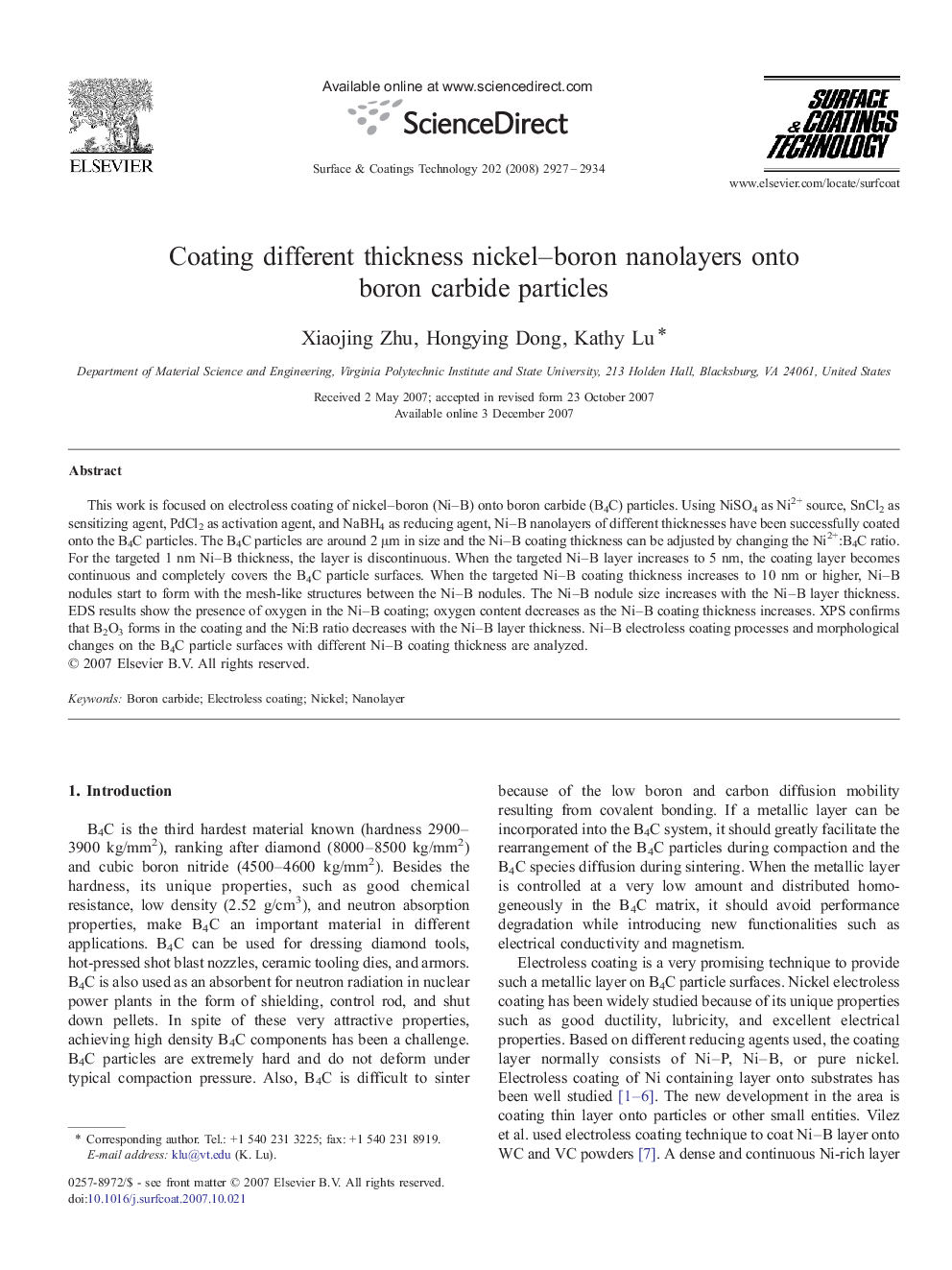| Article ID | Journal | Published Year | Pages | File Type |
|---|---|---|---|---|
| 1661375 | Surface and Coatings Technology | 2008 | 8 Pages |
This work is focused on electroless coating of nickel–boron (Ni–B) onto boron carbide (B4C) particles. Using NiSO4 as Ni2+ source, SnCl2 as sensitizing agent, PdCl2 as activation agent, and NaBH4 as reducing agent, Ni–B nanolayers of different thicknesses have been successfully coated onto the B4C particles. The B4C particles are around 2 μm in size and the Ni–B coating thickness can be adjusted by changing the Ni2+:B4C ratio. For the targeted 1 nm Ni–B thickness, the layer is discontinuous. When the targeted Ni–B layer increases to 5 nm, the coating layer becomes continuous and completely covers the B4C particle surfaces. When the targeted Ni–B coating thickness increases to 10 nm or higher, Ni–B nodules start to form with the mesh-like structures between the Ni–B nodules. The Ni–B nodule size increases with the Ni–B layer thickness. EDS results show the presence of oxygen in the Ni–B coating; oxygen content decreases as the Ni–B coating thickness increases. XPS confirms that B2O3 forms in the coating and the Ni:B ratio decreases with the Ni–B layer thickness. Ni–B electroless coating processes and morphological changes on the B4C particle surfaces with different Ni–B coating thickness are analyzed.
